


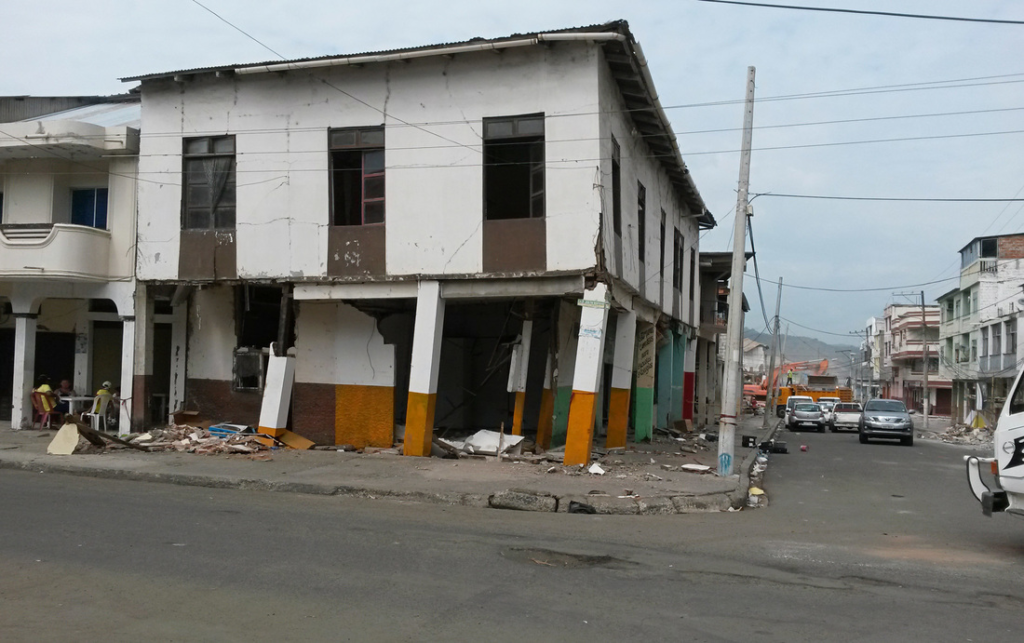
It’s been nearly three months since a 7.8 earthquake rocked the coast of Ecuador. In less than one minute (approximately 50 seconds), Bahía de Caráquez, and many other coastal cities (Pedernales, Manta, Portoviejo) and towns (Jama, Canoa, Mompiche) were hit with a wave of destruction that continues to reverberate to the present in the form of aftershocks, demolition, and rattled nerves. As of last night (Sunday 7/10) around 9pm, there were two more aftershocks (5.4 and 6.5) in a span of less than 10 minutes, and public fear and panic resurfaced yet again. President Correa canceled school for tens of thousands of students on Monday to evaluate possible damages.
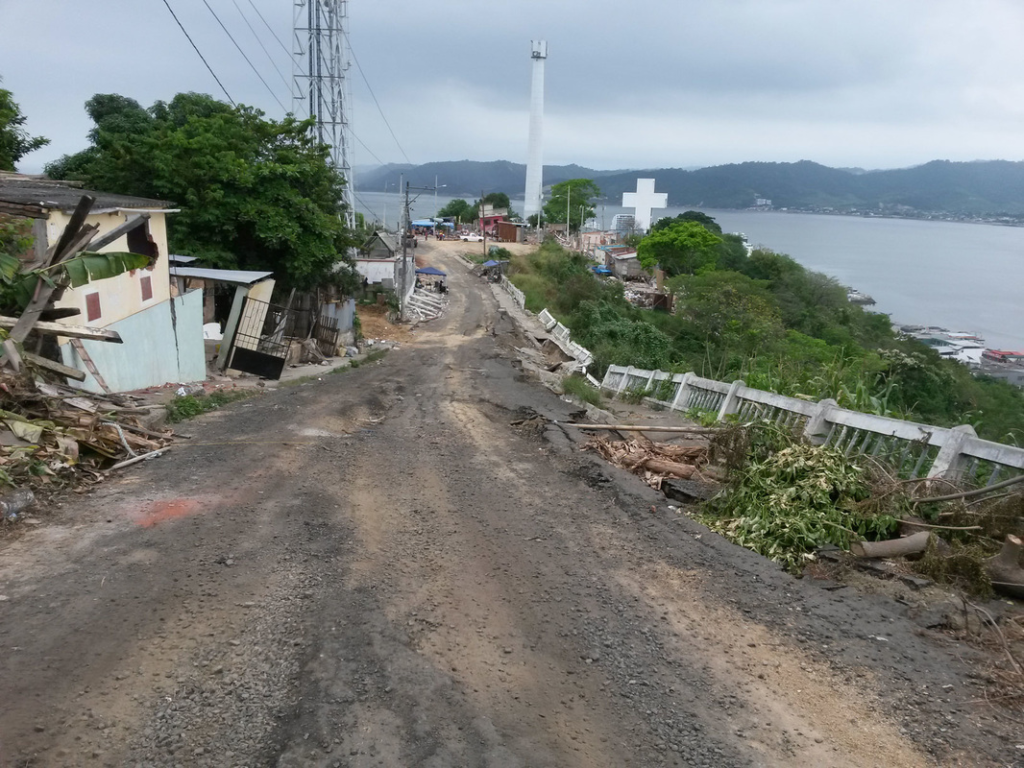
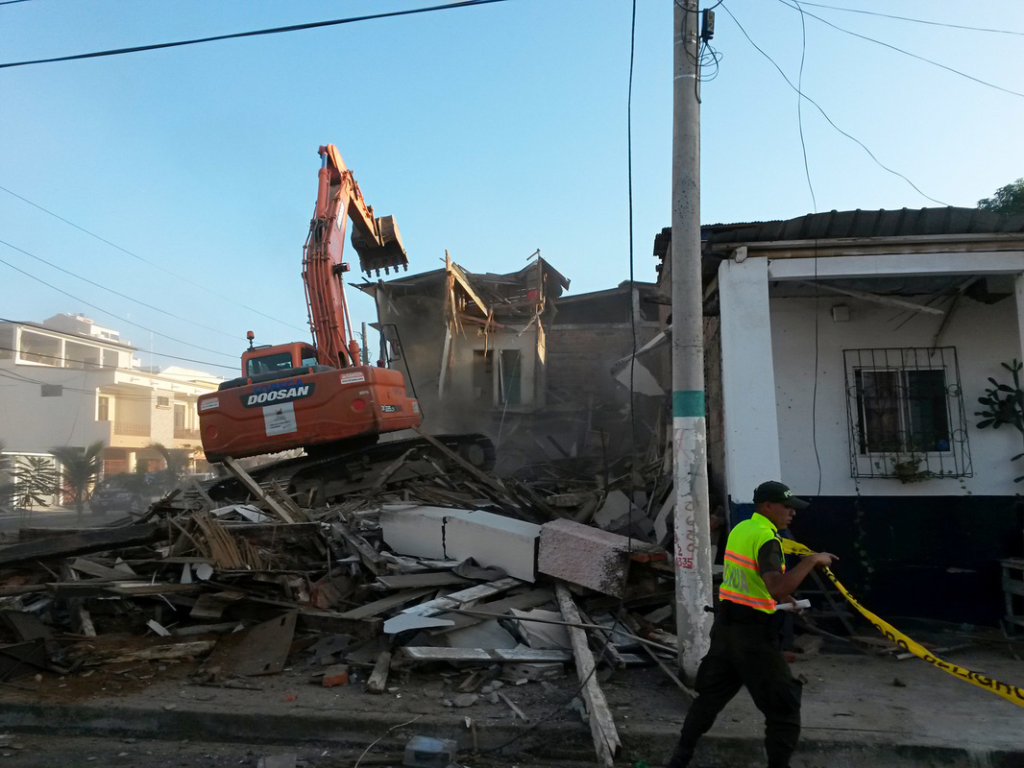
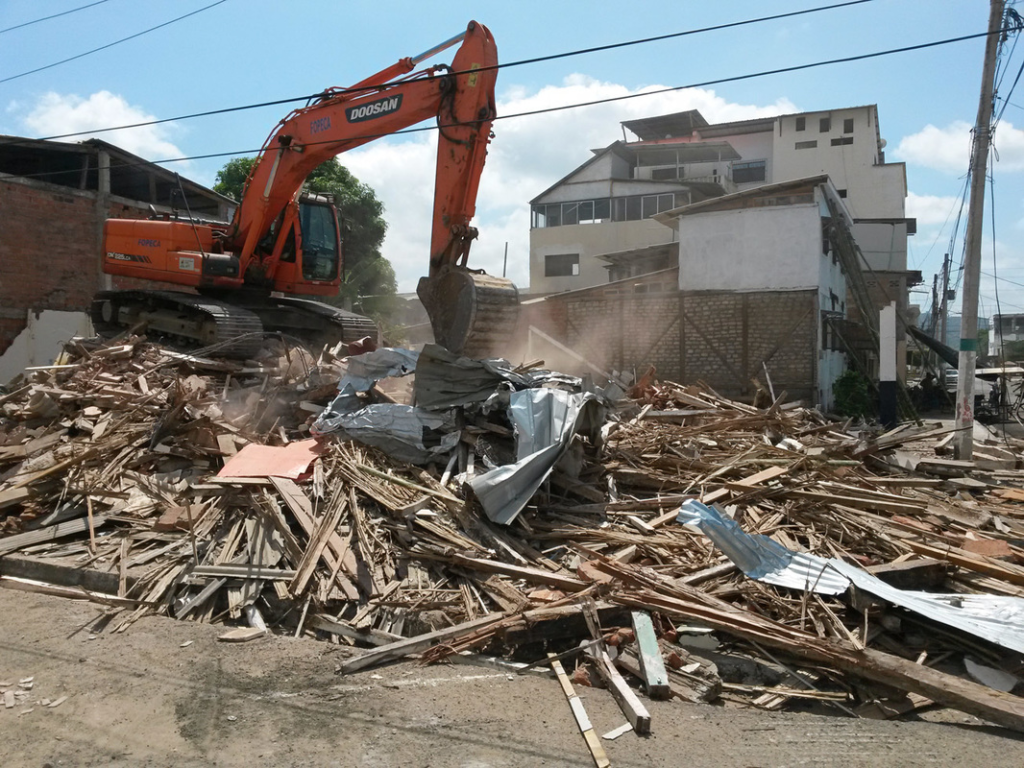

The initial destruction from the April 16th earthquake in Bahía was not as immediately apparent as in other places, such as the business center of Manta, Canoa or downtown Pedernales, which imploded, exploded, and collapsed in spectacularly terrifying fashion. In Bahía, only a handful of buildings outright collapsed during the earthquake, and “only” 15 people were killed. But Bahía’s destruction has been an especially long, drawn-out, and painful one.
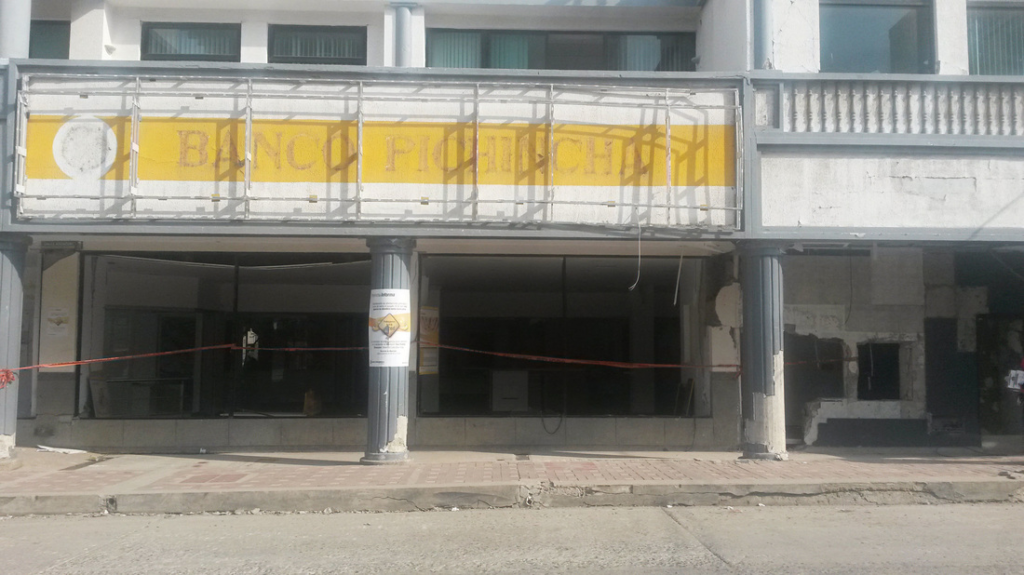
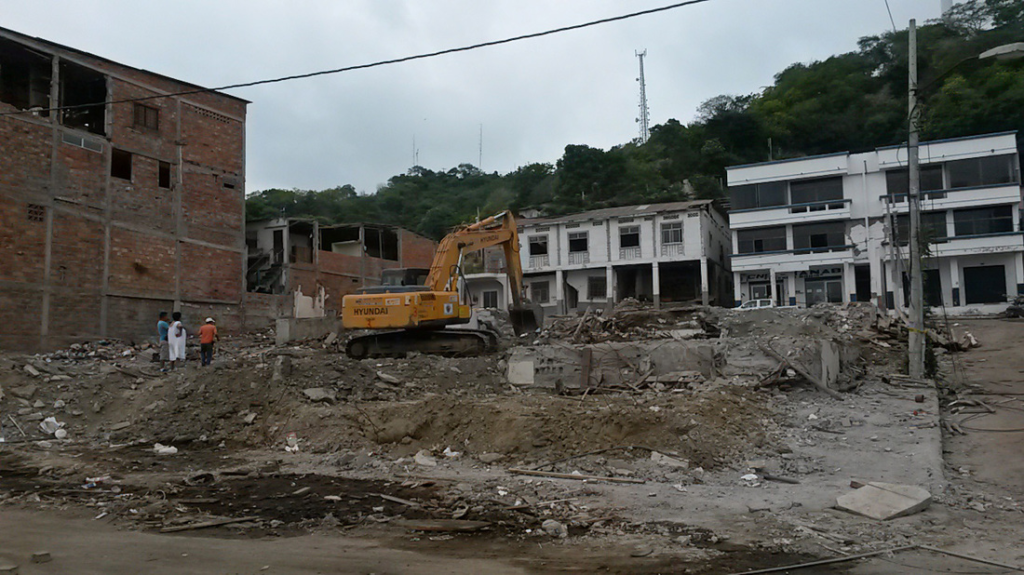


Recently declared (several years ago) a patrimonial (historic) city, Bahía’s buildings, houses, and general infrastructure were originally very well built, and many houses, some of them nearly 100 years old, withstood the earthquake. Initially, despite being a horrifying experience, the destruction in Bahía did not appear to be as profound as in other places. But the thousands of aftershocks since April 16th, along with varying degrees of neglect over the years and a previous major earthquake (1998, 7.1) have combined to make huge portions of Bahía unsafe and uninhabitable.
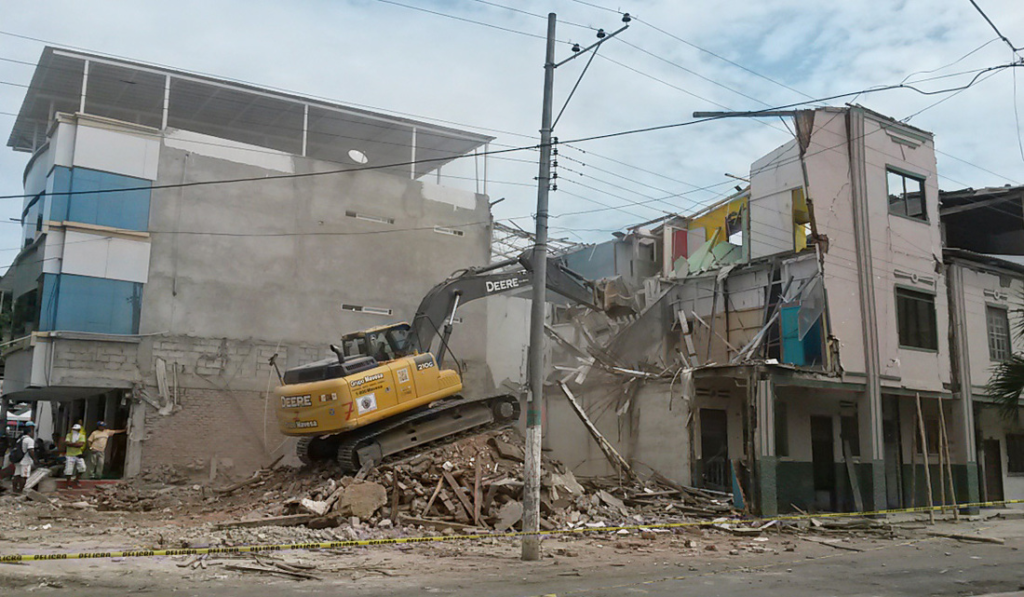

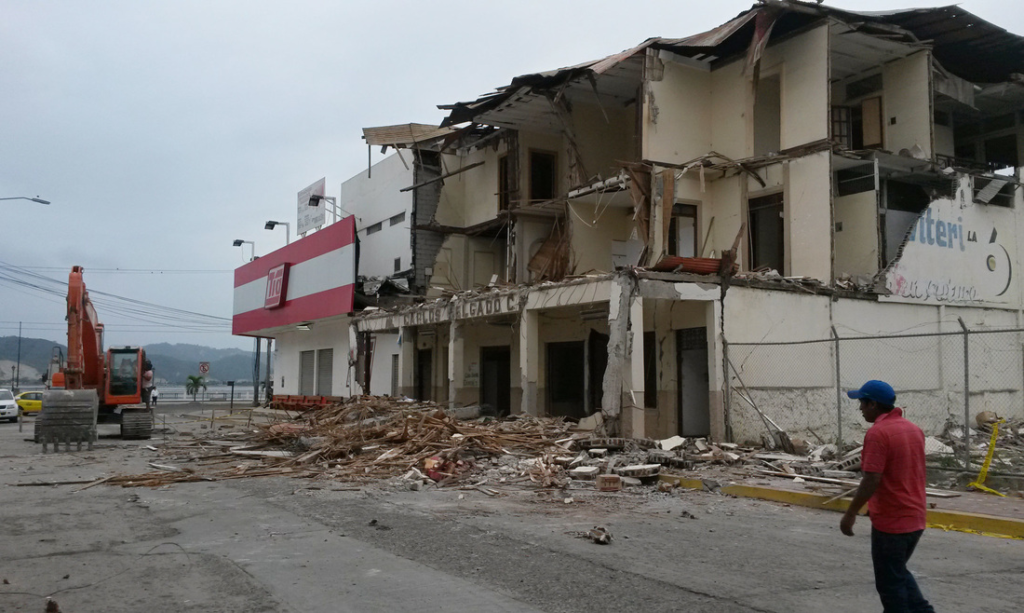
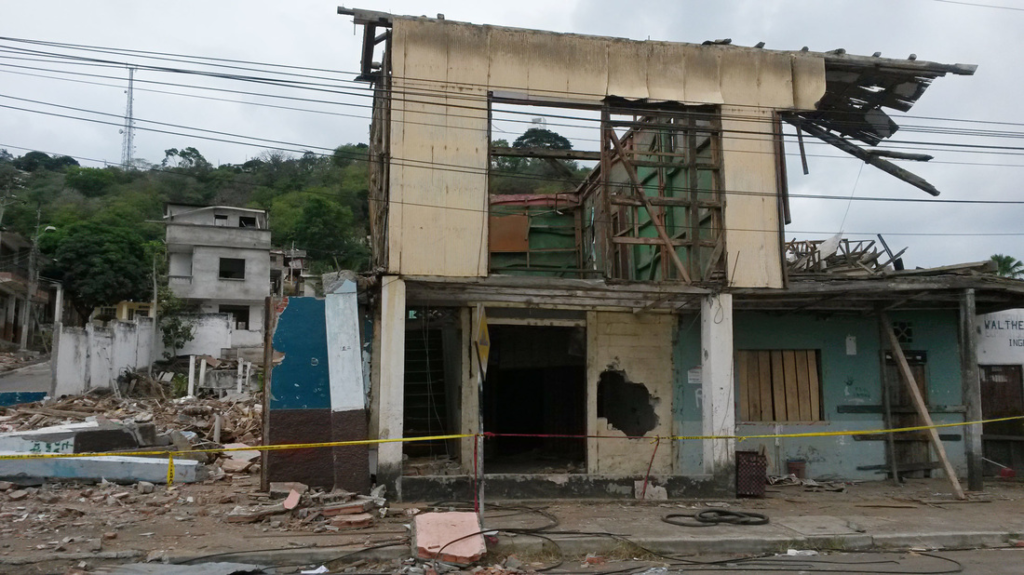
As a result, dozens (hundreds?) of buildings in downtown Bahía have been and continue to be torn down by giant backhoes, bulldozers, and in some cases with sledgehammers by those who make a living risking their lives climbing into damaged houses, apartment buildings, and businesses in order to tear them down.
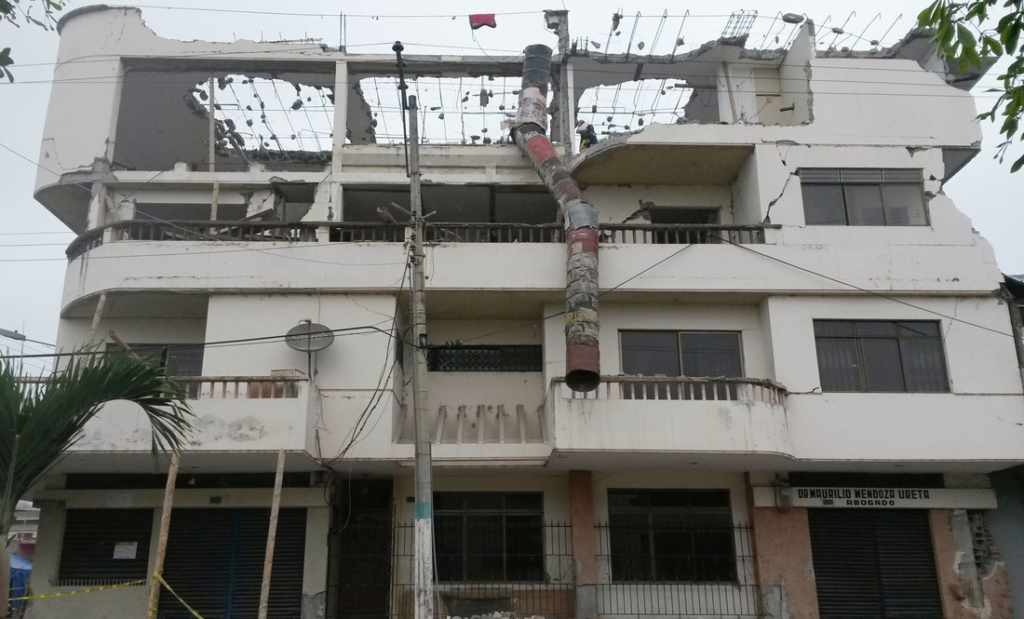
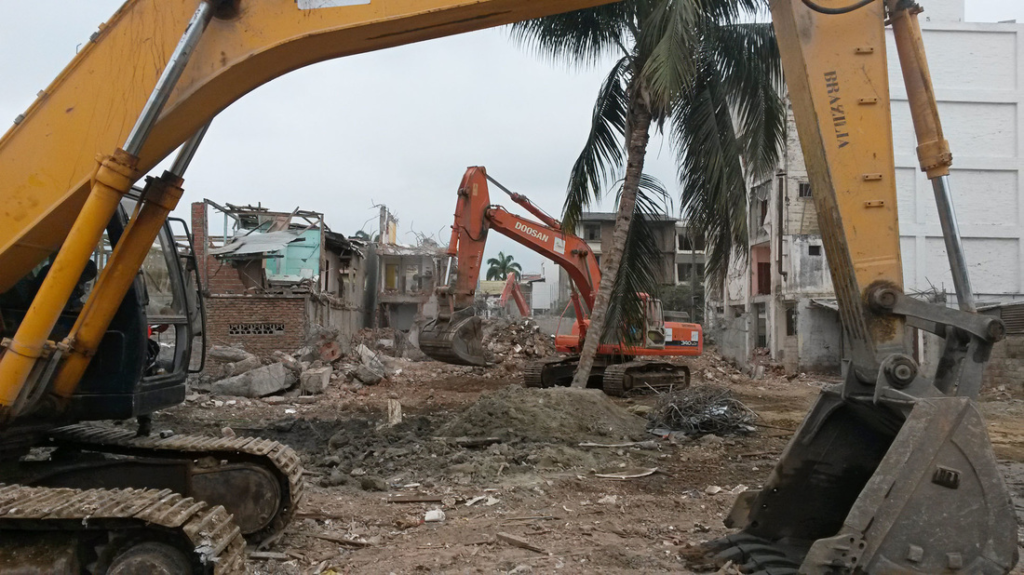
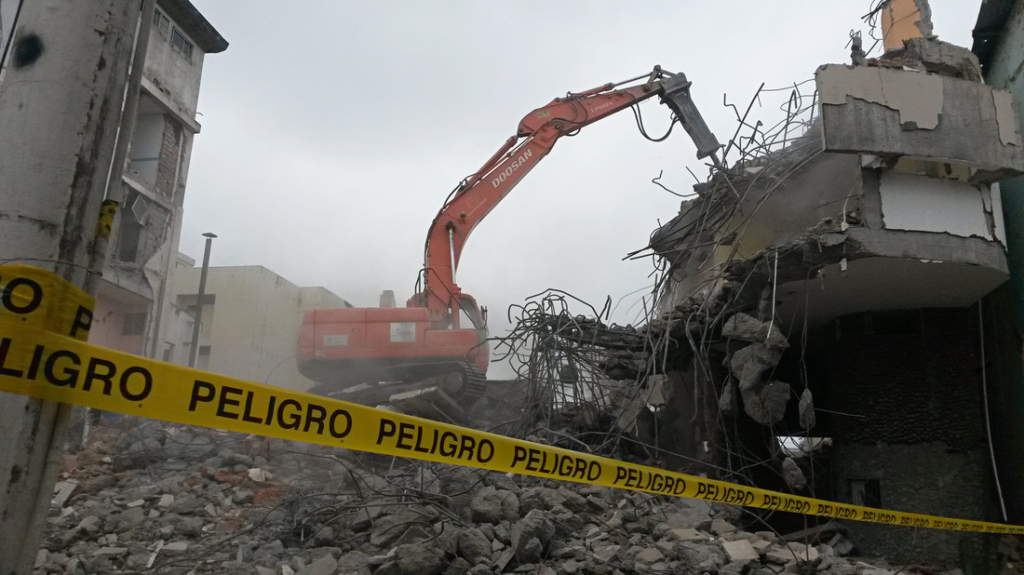
Classic Bahía houses and buildings are being destroyed every day. Crossing the city, it looks as though Bahía had recently been in the middle of a war. Dust, debris, sweat and tears fill the air. Life in Bahía is like a recurring nightmare, where each day one wakes up to the sound of sledgehammers, jackhammers, and the horrible grinding noise that the metal treads on the backhoes make as they scrape across the pavement repositioning themselves to tear down yet another building, residence, or business.
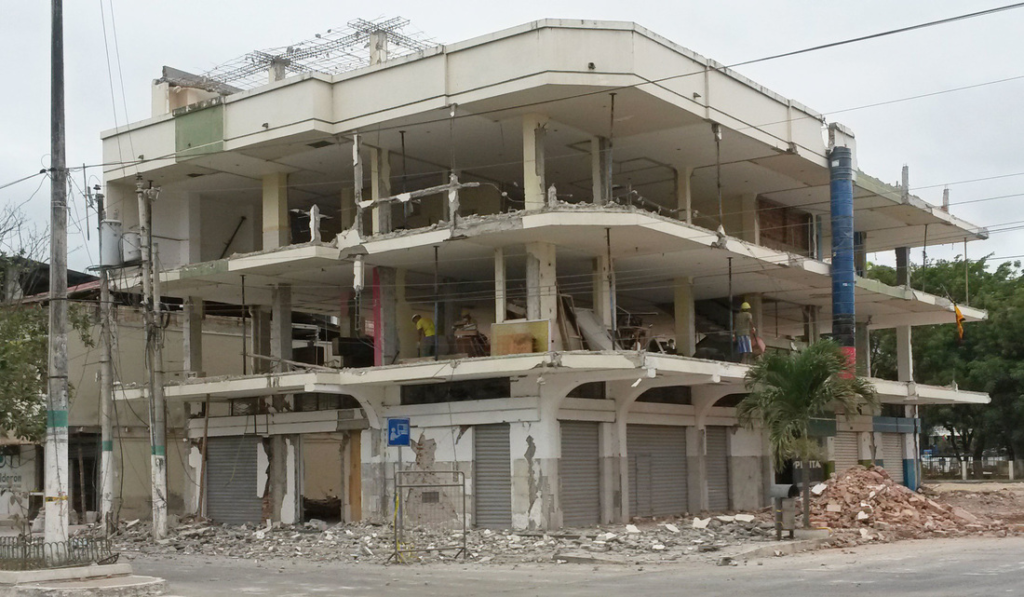
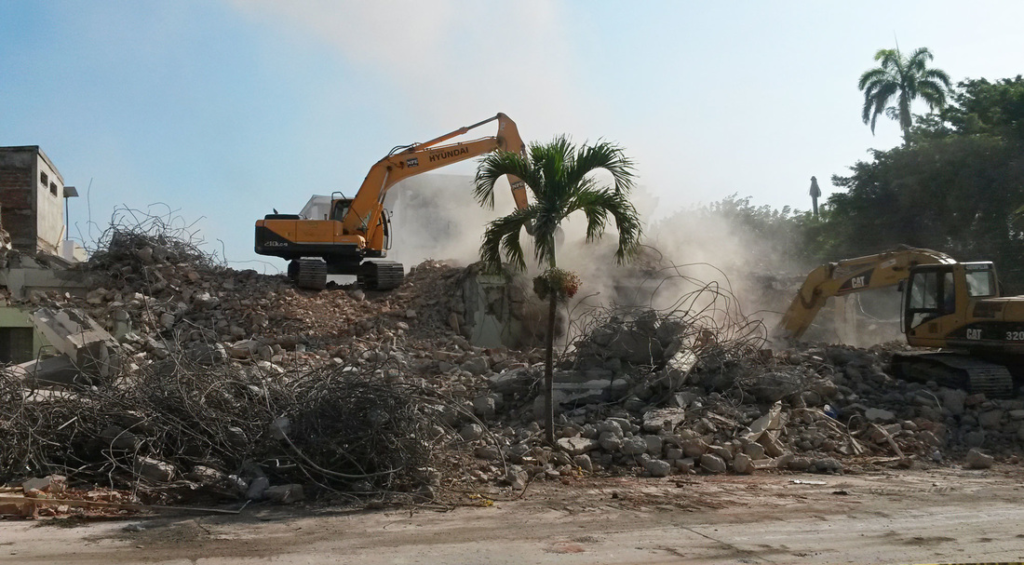
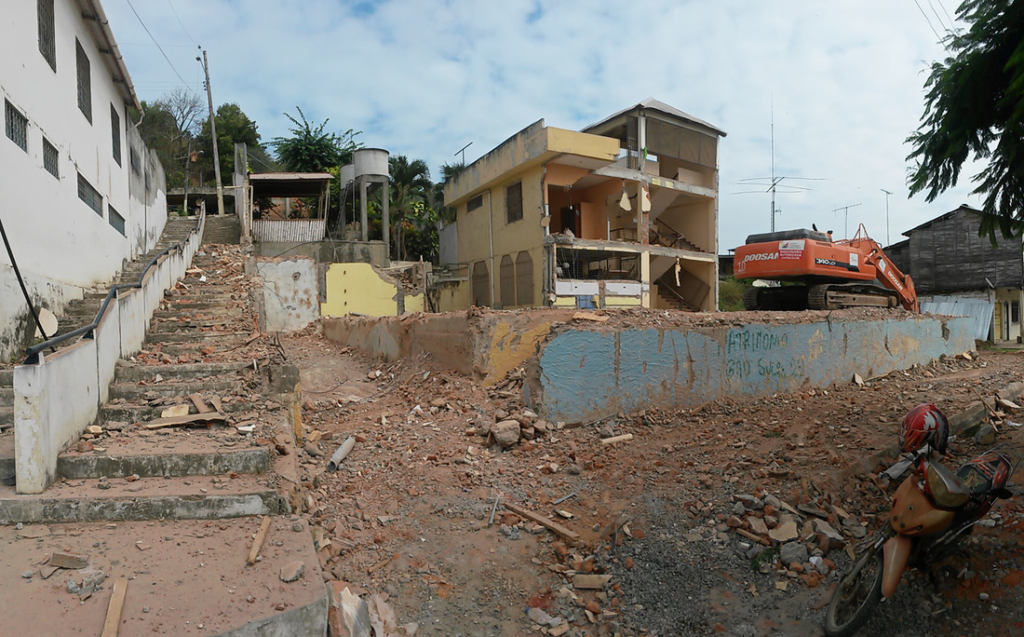
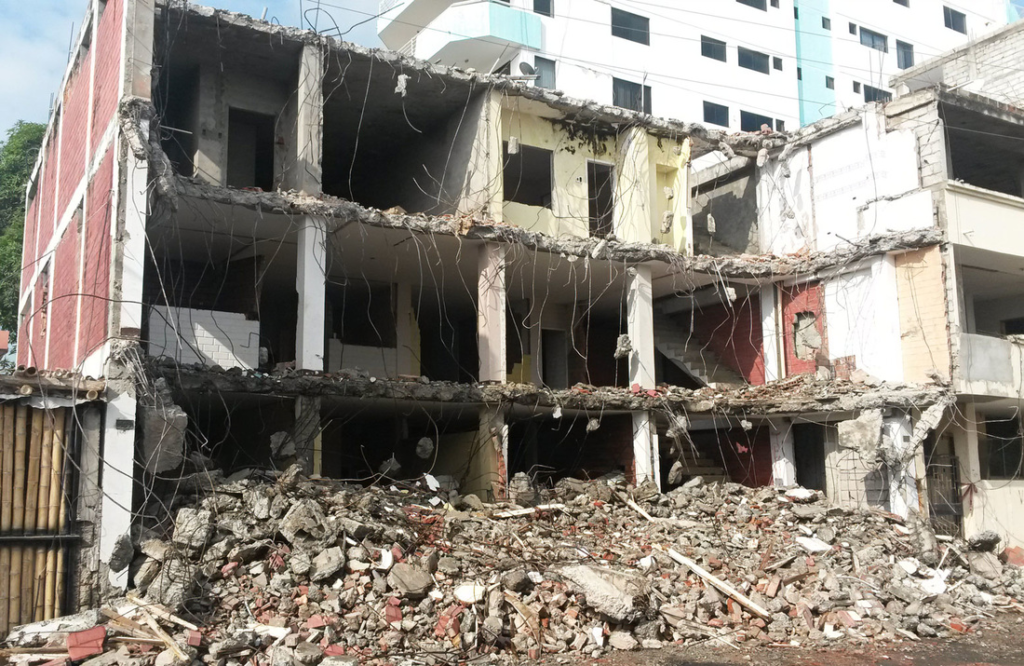
Even some of Bahía’s high-rises are being demolished. With a stroke of classic Ecuadorian ingenuity, the solution for destroying a 8-story building with a backhoe that can only reach three stories, is to build a ramp out of debris and dirt which the backhoe uses to crawl up. While perched on the top of the mound, the driver is sort of inside and underneath the shell of the building that remains to be torn down.


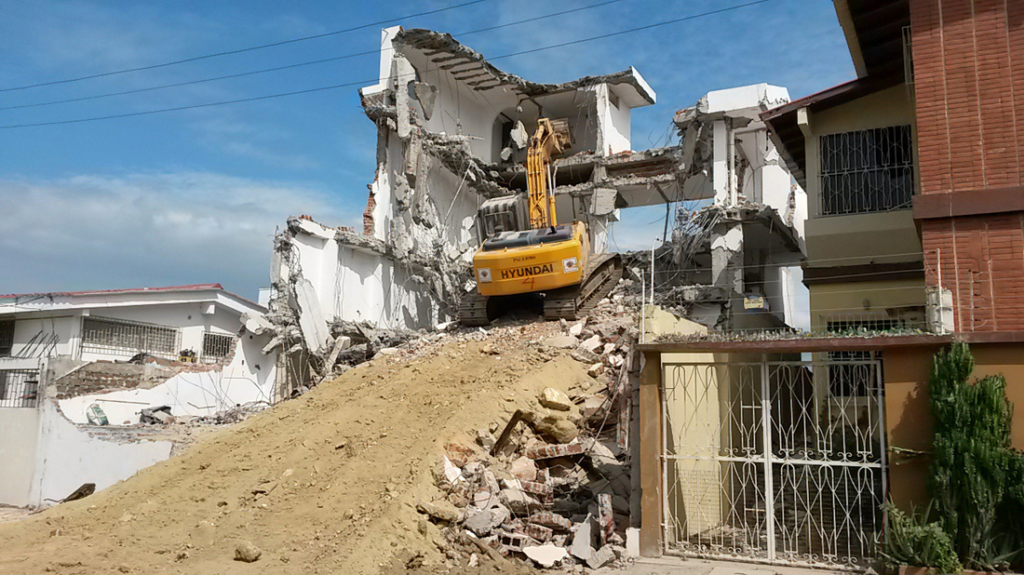

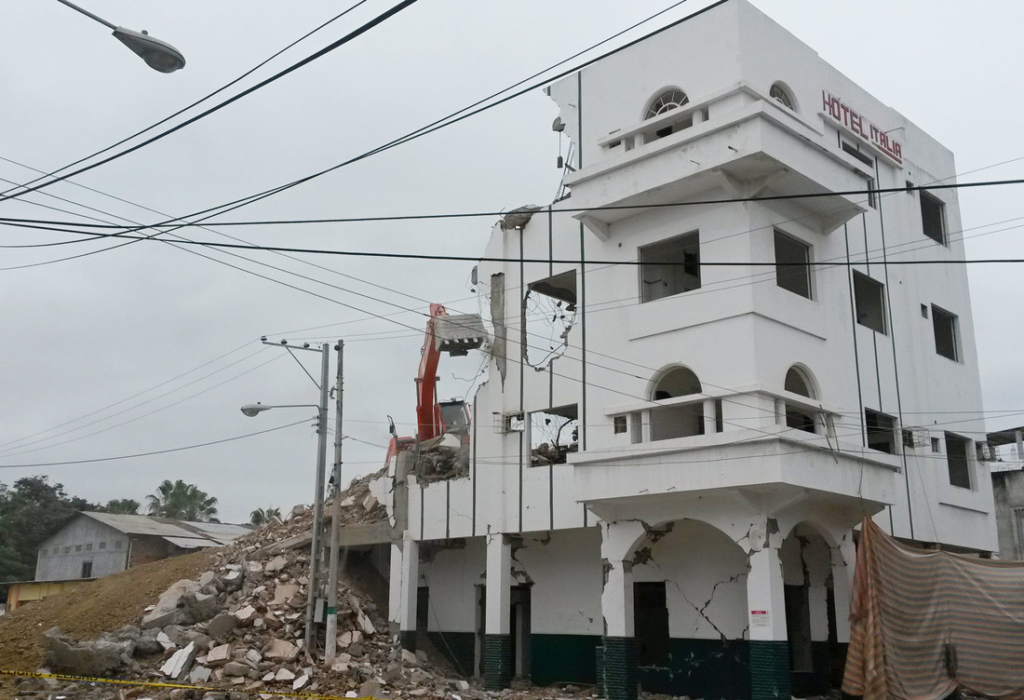
People who didn’t pack up and leave at some point during the past three months, wander about, trying to recover and piece together fragments of their lives. Talk of “reactivating the economy” and rebuilding abounds. But the destruction continues, and more buildings will need to be torn down before the healing can really begin. And more troubling still is the issue of providing for hundreds (thousands?) of helpless people who are still living in tent cities – their homes and personal savings in ruins


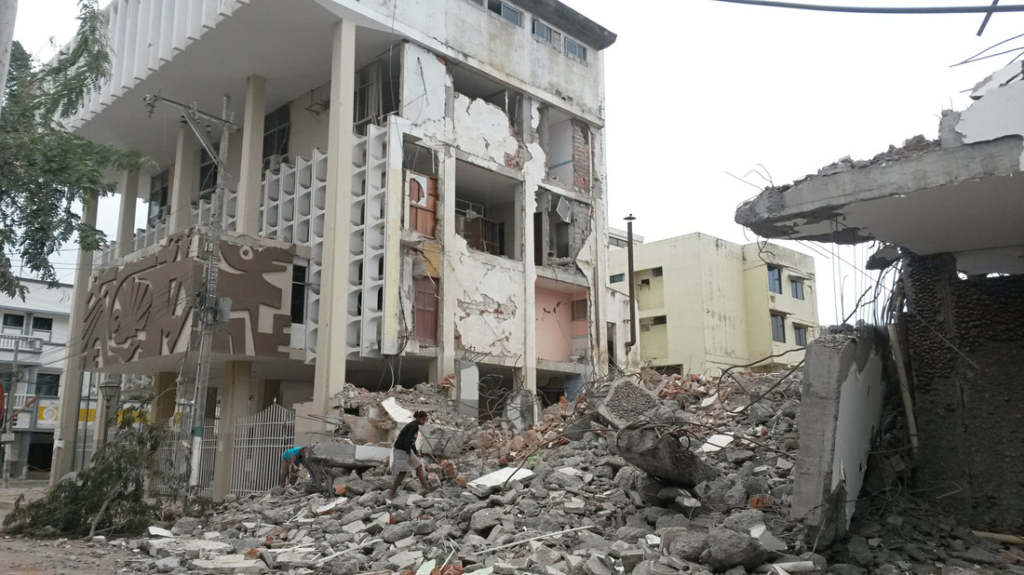
Bahía’s road to recovery will be a long one. In terms of overall earthquake destruction, it’s possible that Bahía is one of the most, if not the most, impacted area in relation to its size.

I don’t think the title of your article matches the content lol. Just kidding, mainly because I had some doubts after reading the article.
Your point of view caught my eye and was very interesting. Thanks. I have a question for you.